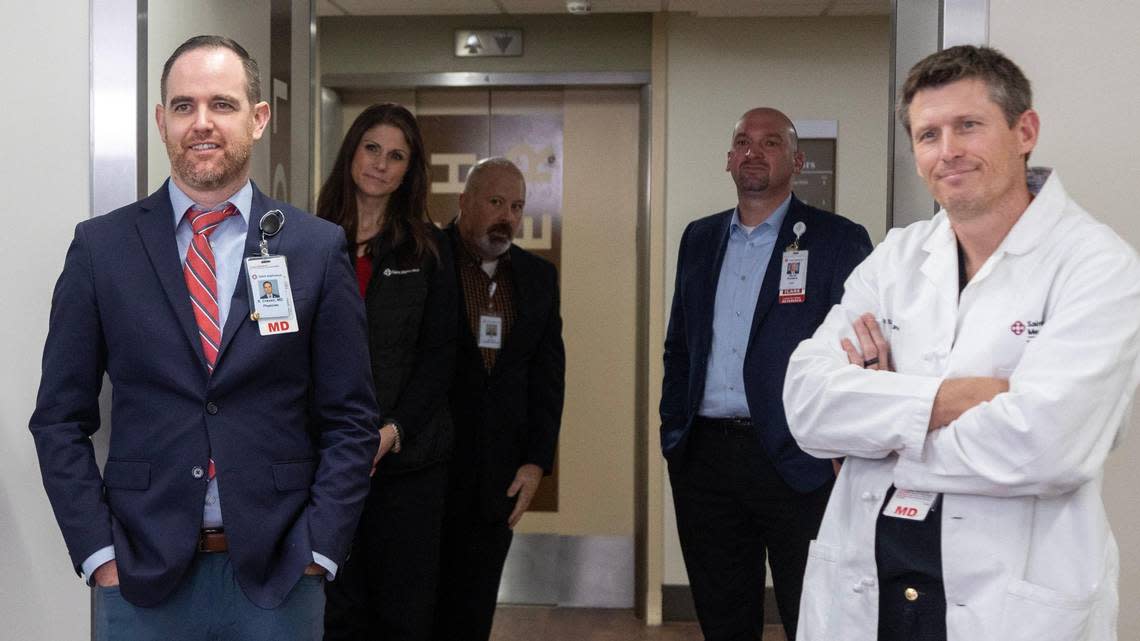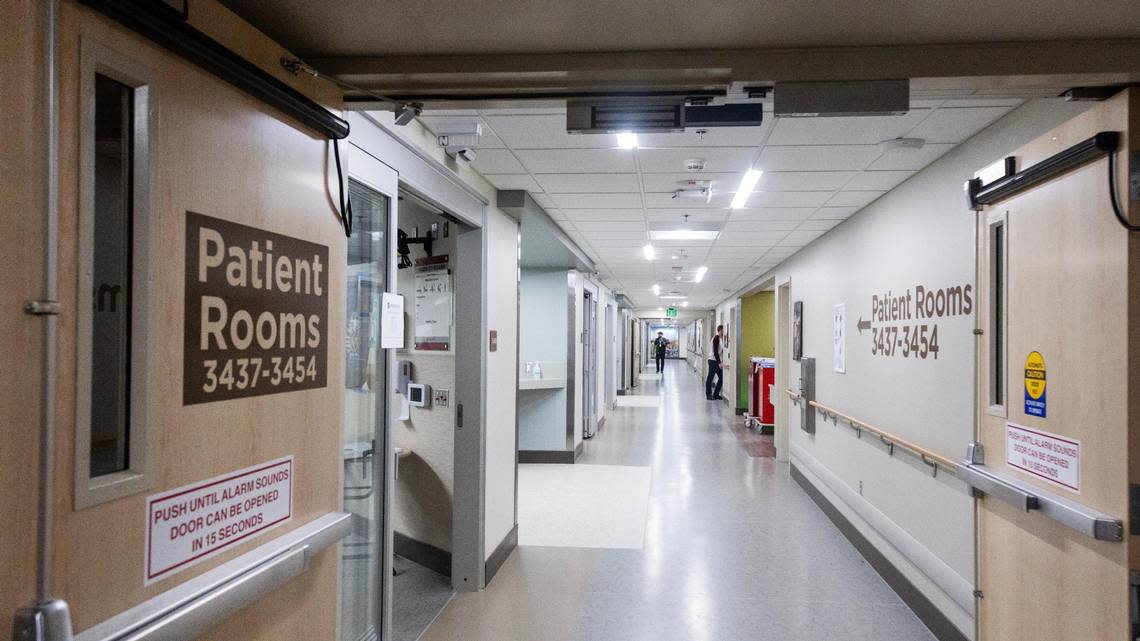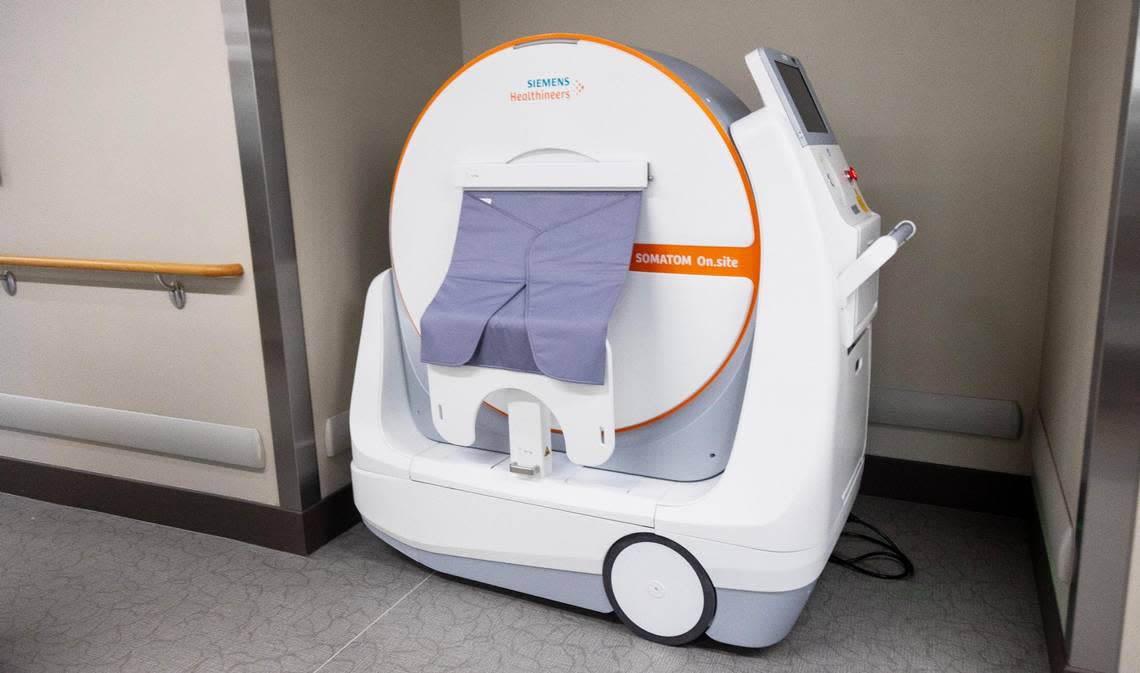‘This is a magnet’: Saint Alphonsus to open new ICU, the first of its kind in Idaho
Saint Alphonsus Regional Medical Center is slated to open a new unit at its hospital building in Boise. But it’s not just any unit. It will be the first neuro, surgical, trauma intensive care unit in Idaho.
That means patients who might have needed to travel to Washington or Utah for advanced critical care will soon be able to get it in the Treasure Valley. The unit, which has 35 patient rooms, occupies an existing floor of the hospital that’s been fully remodeled and outfitted with the latest medical technology.
The unit expands Saint Al’s ability to care for critically ill patients who suffer from the most common to the most complex neurological disorders, from spinal cord and traumatic brain injuries to seizures, strokes and tumors.
It also brings the number of ICU beds at the hospital to 77 during a time when a shortage of such beds has been felt across the region.
The hospital plans to bring the first patients into the unit on March 1.
“This is going to allow us to make enormous improvements in people’s lives,” said Dr. Parker Fillmore, trauma medical director at the Boise hospital, during a walk-through of the new unit with reporters on Friday. “This is a magnet. It’s going to draw up talent, and the whole community will benefit.”

Already, the unit has attracted talent from outside the state. Dr. Spencer Craven, neuro-intensivist and co-director of the new ICU, will help lead a team of neurosurgeons and other specialists working the floor.
Craven completed his fellowship at Stanford University Medical Center in California. His colleagues call him a “trailblazer.”
“I am something that exists in (Idaho) that didn’t exist before. It takes a lot of uncertainty off the table,” Craven told reporters of himself.
A neuro-intensivist is a physician who cares for patients in a neurological ICU. According to Vanderbilt University Medical Center, studies show that specialized care in a neurological or neurosurgical ICU led by a neuro-intensivist is associated with improved outcomes, lower mortality rates and shorter length of stay.
“Once these projects start, we attract an enormous talent pool,” Fillmore said. “You have people throughout the country who are doing these specialty fellowships and training, but they won’t look at the Boise market because we don’t have the space for them to practice their skill set.”

“We don’t like the idea of having to send a patient to another institution just because there’s a thing here that we can’t do,” Craven said. “Prior to the launch of this nest, if somebody needed subspecialty, neurocritical care, they were being flown to Salt Lake City or Seattle. That’s a long distance away.”
Of the 35 new patient rooms, 18 are acute ICU rooms and 17 are stepdown rooms. A stepdown room accommodates an intermediate level of care between ICU and medical-surgical units, according to the hospital.
Claire Jones, neurosciences service line leader at Saint Al’s, said the unit will make patient care more seamless.
The 18 acute ICU rooms, each 398 square feet, have portable brain-monitoring systems and ceiling booms that allow for 360-degree access around patients.
Every room has private bathrooms, family areas with sofas that pull out into beds, and ceiling-mounted lifts to help move patients around. Workstations outside the rooms allow staff members to observe patients at all times.
Shared among the unit is a portable CT (computed tomography) scanner that can be brought to patients’ bedsides to avoid the risks associated with moving them. Previously, staff members would have to transport critically ill patients for imaging.
The CT scanner was purchased with proceeds from the 2022 Saint Alphonsus Festival of Trees.

“The No. 1 place of risk for a patient is a handoff,” Jones said. “It’s where errors happen. It’s where distortion occurs and the story is lost. The more that we can be seamless and clear in what’s happening with that patient, the better for our patients.”
The new unit also has elevator access to the emergency and operating rooms and the helicopter landing pad on the hospital roof.
And as much as it can be, the floor is an uplifting space. Large illustrations of monarch butterflies printed onto maple wood adorn the walls. Murals from local artists and images captured by Idaho photographers of the Boise Foothills, Boise River and Sawtooth Mountains bring the outside landscape inside the sterile unit.
Inspirational quotes from Socrates to Ronald Reagan to Winnie the Pooh are plastered along the hallways. One read, “Our greatest transformation happens through our toughest times.”
The hospital’s goal is to bring a sense of optimism to the space and help patients feel comfortable despite their circumstances, according to Joe Kane, Saint Alphonsus project manager.
“The sickest of the sickest can come to St. Alphonsus,” David McFadyen, president of Saint Alphonsus Regional Medical Center, told reporters. “And we have the capabilities to care for those patients.”
A Boise woman died in October after being hit by a car. A Meridian man was just charged
St. Luke’s Health System says it will lay off workers in Idaho. Who’s affected, and why
